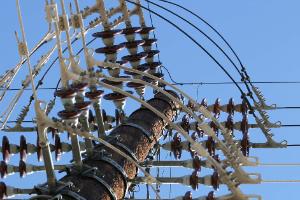 Our responsibility as mechanical and electrical engineers is to control energy waste, keep systems operating at optimal efficiency, reduce demand and minimize consumption.
Our responsibility as mechanical and electrical engineers is to control energy waste, keep systems operating at optimal efficiency, reduce demand and minimize consumption.
By Alfredo Sotolongo*
To achieve the above, we can not only concentrate on the great gluttons of energy, but also on small details that can become not so small details over time. Energy savings are a sum of many details that analyzed and controlled contribute considerably to the grand total.
I recall that ashrae 90.1-2007 for Climate Zone 1 which includes: South Florida, Hawaii, Guam, Puerto Rico and the U.S. Virgin Islands and therefore all our countries with similar climates, recommends that the thermal insulation of the exterior of the building have a resistance of at least R-13. In addition, that all the corners and joints of the different materials that make up the exterior are properly sealed to prevent leaks.
Have you seriously thought about the thermal insulation of air conditioning units whether they are located inside or, more critically, on the outside of the building? Even the roof of the building may comply with ASHRAE recommendations and yet the units located on the roof may have much lower resistance values of R-13. If such units occupy a considerable area of the roof, the integrity of thermal resistance is lost resulting in unnecessary waste of energy.
The vast majority of commonly called rooftop units have fiberglass thermal insulation inside their outer shell with resistance values from R-0.5 to R-3.5, well below what ASHRAE recommends for building roofs. In addition, the seal in the corners is very difficult to achieve and facilitates the leakage of air conditioning or the entry of our hot air with high enthalpy into the unit.
When selecting air conditioning units it is important that the thermal insulation of the walls and ceiling of the same, whether installed inside or outside, is taken into consideration. The greatest impact on energy conservation is those installed outdoors and especially the self-contained roof. The fact that they are installed outside puts them in contact with a warmer and higher enthalpy air and the roof area they occupy will represent the thermal resistance value of the unit and not that of the roof.
We all know that heat transfer by conductivity is represented by the equation Q = (1/R) (A) (ΔT) where:
Q = Btu/hr
R = Thermal resistance = (Ft²) (°F) (hr) / Btu
A = Surface area in Ft²
ΔT = Temperature differential between outside air and indoor air of the unit in °F
Therefore, for the same area and the same temperature differential, the higher the thermal resistance value, the lower the heat transfer through the insulation. Conductivity heat transfer through the walls and ceiling of units using 1/2" to 1" thick fiberglass, compared to those using double metal cover and closed-cell polyurethane insulation, conduct more than 3 times the energy.
Among the companies that have dedicated the most resources to developing units with components that optimize the operation and therefore minimize energy consumption is AAON, which supplies all its units either for indoor or outdoor installation with walls and ceilings of double metal coverage with thermal insulation in the closed cell polyurethane medium that result in thermal resistance values of R-13 or higher.
Due to the rampant and constant increase in the cost of electrical energy, more and more building owners using the services of consulting engineers are asking them to consider equipment that minimizes energy consumption. Although this may represent an additional upfront cost, it usually recovers in less than two years and sometimes in less time depending on the cost of electric power.
I am pleased to share with the readers of ACR LATINOAMÉRICA the new concepts in our industry, as well as the concerns that arise day by day during my professional activities.
*Engineer Alfredo Sotolongo, president of Protec, Inc., is certified as a professional engineer in Puerto Rico and the State of Florida; has more than 40 years of experience in the application and sale of systems and equipment for energy conservation. He is a member of ASME (American Society of Mechanical Engineers), AEE (Association of Energy Engineers), with whom he is certified as an Engineer in Energy Management; he is also a member of ASHRAE and was president of the Miami chapter of that association. He has also presented numerous talks on the subject of energy conservation.













